If you are sorting arts and crafts finds from the Viking Age, it makes sense to divide them into six Viking art styles. In the early Middle Ages, griffin motifs of the Oseberg style and the Borre style dominated. After that, the Vikings relied on narrow animal depictions in the Jelling style and plant patterns in the magnificent Mammen style. After the Ringerike style, a preference for snake motifs developed with the concluding Urnes style in the Middle Ages.
Viking Age Art
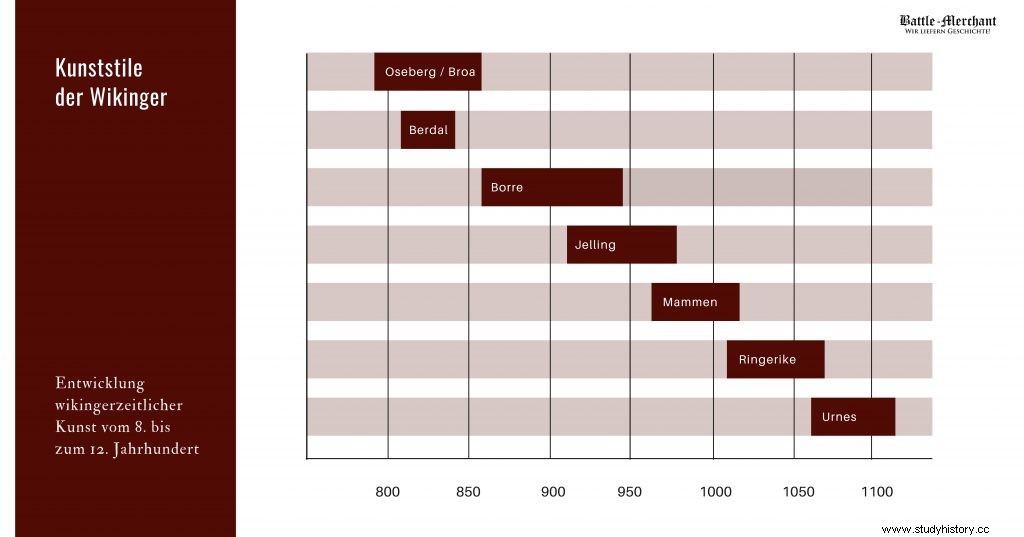
Viking arts and crafts had their roots primarily in Germanic ornamentation. The processed patterns appear powerful and dynamic, sometimes even confused and restless. Above all, animal ornamentation, i.e. the stylized representation of animal bodies, is a focus of Scandinavian style development.
The classification of the Viking Age art styles is therefore based entirely on the implementation of these ornaments. How were animal figures depicted, what details were worked out and what patterns were used to line them? Each art style places emphasis on different stylistic elements. Nevertheless, it should be said that not every find can be assigned exactly to a style. As in other areas of art, there are mixed forms.
If one examines the current find situation, one gets the impression that the Vikings had devoted themselves more to applied art. They decorated pieces of jewellery, tombstones and the like. The art styles were named after the Scandinavian sites where those objects were found that have the most distinctive stylistic characteristics for the respective art style.
Please note:When a style begins and ends depends on the current finds and of course only represents an approximate guide. The timeline above is therefore more of an approximation and serves as a rough orientation.
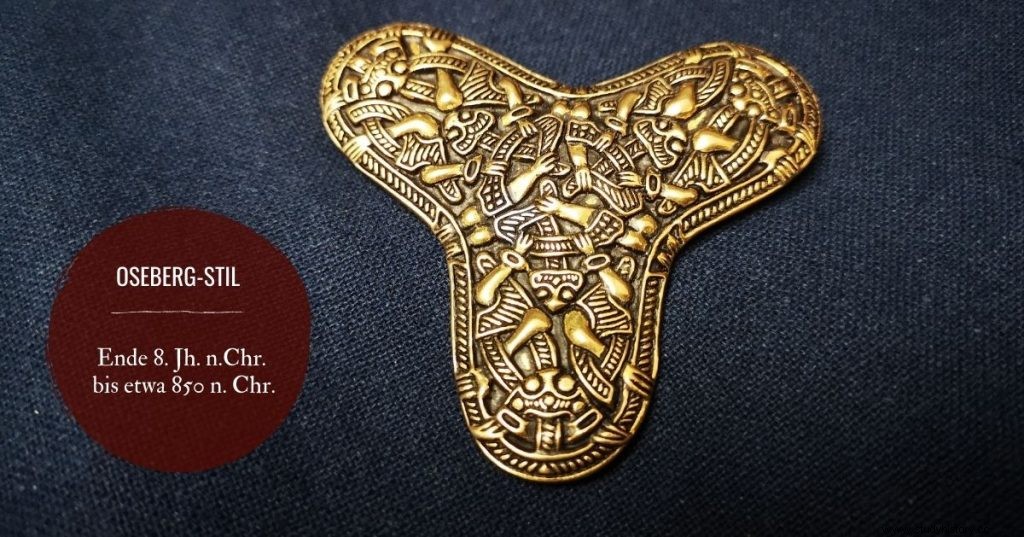
Oseberg style of the Vikings with depictions of animals and change to the motif of predatory animals
The Oseberg style of the Vikings was common in the early Middle Ages from the late 8th century to the period around 850. This makes it the chronological first of the typical Viking Age art styles. This art style, which has also become known as the Broa style, was primarily characterized by depictions of animals in the Viking Age. Finds of the Oseberg style often consisted of ribbon-shaped and long animal figures that were intertwined. With the beast of prey, the Vikings represented a new figure in the style of the Middle Ages.
This animal was initially combined with older motifs by the Oseberg style in the early Middle Ages. Later, the raptor became more and more dominant in the works of Viking artisans over time. The lead finds at the Oseberg site come from a ship grave on the Oslofjord estuary in southern Norway. Especially jewelry and utensils made of metal or wood were popular when this art style was used in the Viking Age.
The Oseberg guide find attracted particular attention with its five posts with carved animal heads. These heads illustrated the development of the style of art during the period of dissemination in the Middle Ages. Because the Vikings already dedicated the more recent animal head posts primarily to the motif of predatory animals. Other finds from Broa included animal motifs with tendril-like outgrowths and semi-naturalistic birds.
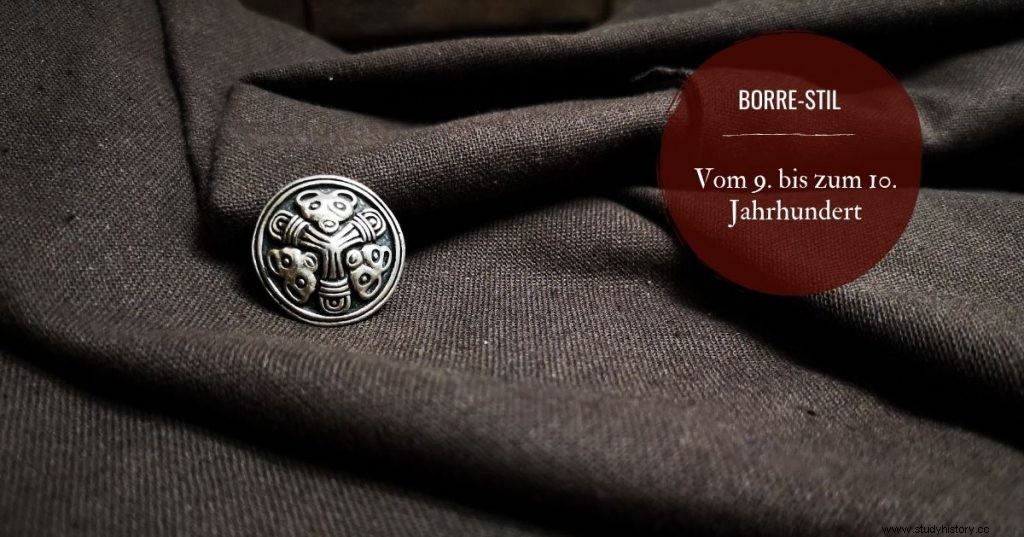
Borre style with further developed gripping animal motifs and knot ornaments in the early Middle Ages
From the 9th to the 10th century, the Borre style shaped Viking art in the early Middle Ages, particularly in the eastern parts of the North. In addition to depictions of animals, knot ornaments were key features of this art style. With the Borre style, the griffin motifs remained an important element of Viking handicrafts and sometimes even came to the fore. That is why the style phase was also referred to as the gripping animal style. The eponymous site Borre was a grave in the Norwegian municipality of Horten.
The Borre style changed the design of the gripping animals in the Viking Age. Faces with a straight gaze, spherical eyes and slimmer limbs were new features of medieval animal motifs. In addition, the gripping animals had raised ears and triangular heads with plastic noses. Finds in the Borre burial ground are also characterized by dense and mirror-symmetrical motifs. For example, pretzel knots and ring chains with braided bands were found.
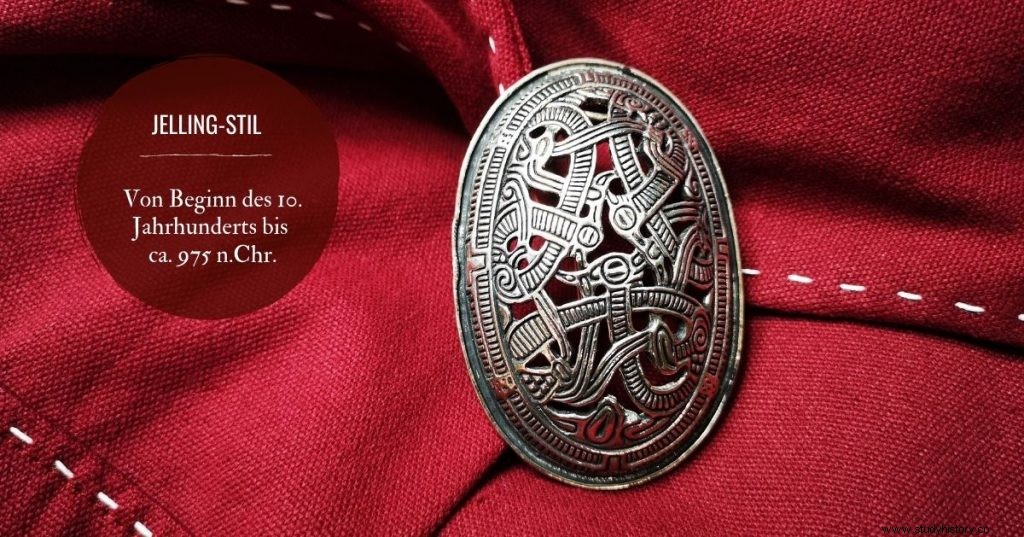
Jelling style with narrow depictions of animals, fur-like decorations and leitmotifs
In the period between the beginning of the 10th century and circa 975, the Jelling style was popularized by Viking artisans in the early Middle Ages. The leading find came from a royal tomb at the site of Jelling on the Danish mainland. In this medieval art style, the main focus was also on animal motifs. Characteristics of the figures of the Jelling style were particularly elongated and narrow representations. Ribbon-like whorls of craftwork appeared fairly even.
Furry embellishments and ladder patterns made Viking work distinctly different from previous art styles. In addition, twisted braids could be seen on the animal napes, while legs of the Jelling-style animal depictions were curled at the thigh in a spiral shape. Animal heads were presented with a bulging upper lip and open mouths.
The craftsmen of the Viking Age often used a center band when creating thin and vine-like Jelling-style decorations. Runic crosses, jewelery and Viking objects made of wood or metal are classic Jelling finds. A silver cup was a famous medieval find in the king's tomb in Jelling. There were also bronze finds such as an oval fibula in the Norwegian site of Morberg and a tongue-shaped brooch from Birka in Sweden.
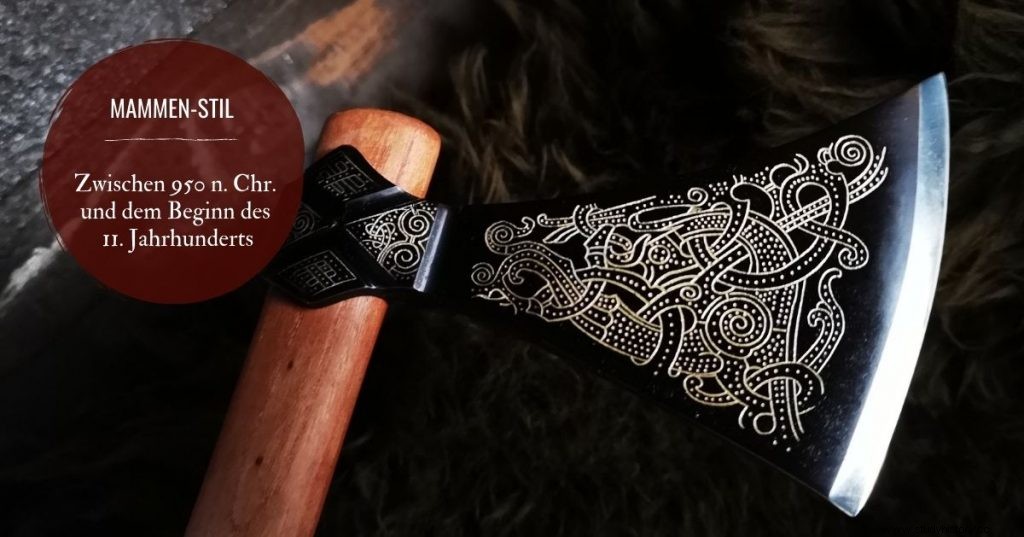
Mammen style with plant patterns and precious materials
Between 950 and the beginning of the 11th century, early medieval Viking artisans used the Mammen style, which is very similar to the Jelling style. The art style got its name from a find in the chamber tomb in the Danish town of Mammen. Animal motifs were no longer the sole focus of the Mammen style in the Viking Age. With this medieval art style, the Vikings used plant patterns for the first time. Viking depictions of vine and acanthus tendrils developed into particularly popular motifs.
Symmetry played a smaller role in the Mammen style compared to previous Viking Age art styles. The artisans mostly dispensed with additional auxiliary motifs and often used the entire surface that was available on an object for their works. With the asymmetrical lines of the Mammen style, the Vikings created tendril-like and twisted outgrowths. Animal carcasses from this early medieval art style are more compact and comprised larger areas of varying patterns for infill.
Mammen-style handicrafts used extraordinarily ornate horn carvings and jewellery, as well as walrus ivory, silver or other precious materials. An iron ax with silver decorations from Mammen's chamber grave find is considered a major highlight among all Viking finds. Therefore, the object has even become known as the so-called Mammenaxe. You can see a replica of it a little further up in the picture. Also, the famous Cammin Reliquary exemplified the Mammen style.
Ringerike style with rune stones and clear contours towards the end of the early Middle Ages
From the beginning to the second half of the 11th century, Viking artisans made their works in the Ringerike style towards the end of the Early Middle Ages. In addition to the Ringerike landscape, the Ringerike sandstone lends its name to this style from the Viking Age. Numerous Ringerike-style rune stones were created from this. Tight, clear and naturalistic contours are key features of this medieval style.
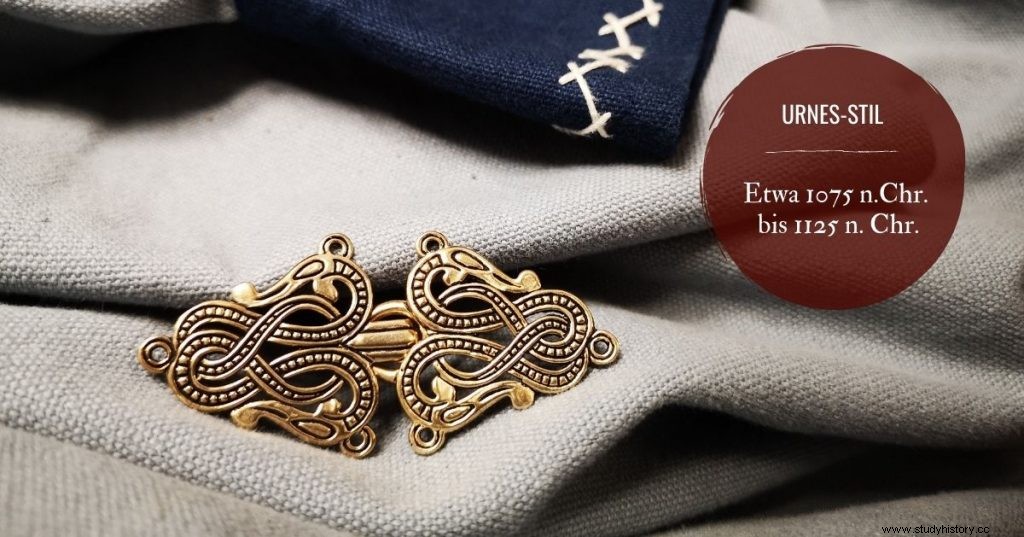
Urnes style with delicate depictions of animals and particularly eye-catching snake motifs from the Vikings
The last art style of the Viking Age spread in the High Middle Ages, approximately between 1075 and 1125, with the Urnes style. The Viking art style got its name from the finds from the Urnes stave church on the east bank of the Lusterfjord estuary. Four-legged and ribbon-shaped animals and snakes were popular motifs in the Urnes style.
The influence of the Ringerike style on this medieval style of the Vikings was still very large. Delicate depictions of animals were mostly intertwined in the Urnes style. A notable novelty in Viking-style handicrafts were winged dragons. Systems with interlocking loops and open figure-of-eight loops were considered a defining feature of the Urnes style. The feet and heads of the figures often have a long, narrow end.
The Urnes style left a lasting impression in the Viking Age with more graceful depictions of animals as well as with pointed snake heads. The combination of sinuous and graceful lines with serpent motifs has often been interpreted as depicting the opposition between good and evil in the Middle Ages. Among the finds related to the Urnes style of the Vikings, the portal carvings of the Urnes stave church are particularly well known.
